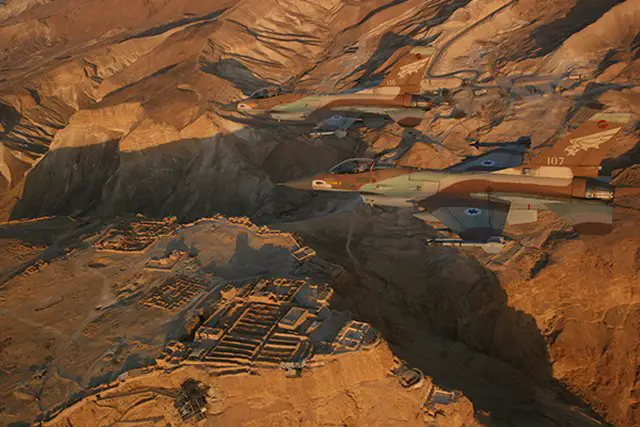Breaking news
Israel's F-16A/B Netz fighter jets landed for the last time.
| a | |||
|
|
|||
|
World Defense & Security News - Israel
|
|||
|
|
|||
|
Israel's F-16A/B Netz fighter jets landed for the last time
|
|||
|
36 years of operational activity have come to an end this morning as the Israel Air Force's "Netz" (F-16A/B) landed from their flight and shut off the engine for the last time. The IAF parts from the first of F-16 aircraft that are leaving a hefty past behind them and a promising future ahead.
|
|||
|
|
|||
 (Credit: IAF/Maj. Ofer) (Credit: IAF/Maj. Ofer) |
|||
|
|
|||
|
Saying goodbye: the IAF parts from the "Netz" (F-16A/B) jets that are completing their service in the IAF after 36 years of operational activity. In a ceremony that took place in Ouvda AFB, the engines of the first F-16 aircraft in the IAF were shut off, leaving behind operational achievements, great knowledge and countless memories. "Moments ago, the 'Netz' landed from its last flight after 36 years of flight", said Col. Itamar, Ouvda AFB Commander. "Today, we say goodbye to an incredible aircraft that seems to have been created by an artist, an aircraft that fits its missions like a glove".
"Today, we sign the last chapter of the 'Netz' aircraft in the IAF", added Lt. Col. Udi, the "Flying Dragon" Squadron Commander that has been flying the aircraft in its final years. "Only those who have touched the aircraft, only those who have been touched by the aircraft, know that the 'Netz' is not just an object - it has a soul". The first four "Netz" aircraft landed in Ramat David AFB on July 2, 1980. A few months after their arrival, it already had a significant achievement to its name: the aircraft's first shut down in the world. The historic shut down took place in April, 1981, when Brig. Gen. (Res.) Rafi Berkovitch shot down a Syrian Mil-Mi 8 helicopter. Since that shut down and to this day, the "Netz" has conducted countless missions and partook in many operations; the 2006 Second Lebanon War, 1996 Operation "Grapes of Wrath", 2008 Operation "Cast Lead", 2002 Operation "Pillar of Defense" and 2014 Operation "Protective Edge" being just part of the operations the "Netz" took part in. In fact, during its years of activity, the aircraft has conducted 474,000 sorties and 335,000 flight hours. "In the history books, the 'Netz' will be written as the aircraft that changed the face of the Middle East", stated Brig.-Gen. Amir Eshel, IAF Commander, in the ceremony. The most known sortie by the "Netz" is the destruction of the Iraqi nuclear reactor during 1981 Operation "Opera", that symbolized a significant milestone in the aircraft's activity and for the IAF. In an interview with the IAF Magazine, Maj.-Gen. (Res.) Amos Yadlin, then Deputy Commander of the F-16 Squadron and one of the eight combat pilots that took part in the operation, shared: "The nuclear reactor was protected by SAM batteries that were brought there after the Iranians tried attacking it in January, 1981. The IAF had never flown such a far distance and the last 'leg' was in a flat zone filled with high voltage poles in which the Iraqi Aerial Defense forces could easily discover us". Despite the difficulty, it is clear that the attack on the nuclear reactor was one of the most impressive achievements in IAF history. "I believe that this operation is proof of Israel's need of a strong and quality, creative and daring air force", added Brig.-Gen. (Res.) Yadlin. "This is an example of how one tactical sortie of eight attack aircraft and six interception aircraft, could achieve a strategic change that will remain valid for generations to come". The "Flying Falcon" may be completing its service, however it seems it will have a lasting influence for many more years as it seems those who learned from and flew the aircraft will be continuing their service in the IAF. Maj. Itzik: "We are a few people, with few means, but with so many accomplishments and so much work". |
|||


























